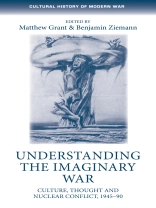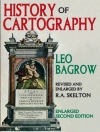This collection offers a fresh interpretation of the Cold War as an imaginary war, a conflict that had imaginations of nuclear devastation as one of its main battlegrounds. The book includes survey chapters and case studies on Western Europe, the USSR, Japan and the USA. Looking at various strands of intellectual debate and at different media, from documentary film to fiction, the chapters demonstrate the difficulties to make the unthinkable and unimaginable – nuclear apocalypse – imaginable. The book will be required reading for everyone who wants to understand the cultural dynamics of the Cold War through the angle of its core ingredient, nuclear weapons.
表中的内容
Introduction. The cold war as an imaginary war – Matthew Grant and Benjamin Ziemann
1. The apocalyptic fiction: shaping the future in the cold war – Eva Horn
2. Building peace, fearing the apocalypse: Nuclear danger in Soviet cold war culture, 1945-91 – Miriam Dobson
3. Nuclear themes in American culture, 1945 to the present – Paul Boyer
4. The imaginative landscape of nuclear war in Britain, 1945-65 – Matthew Grant
5. German angst? Debating cold war anxieties in West Germany, 1945-90 – Benjamin Ziemann
6. After Hiroshima. Günther Anders and the history of anti-nuclear critique – Jason Dawsey
7. Hiroshima/Nagasaki, civil rights and anti-war protest in Japan’s cold war – Ann Sheriff
8. Catholic anti-communism, the bomb and perceptions of apocalypse in West Germany and the USA, 1945-90 – Daniel Gerster
9. ‘The nuclear arms race is psychological at its roots.’ Physicians and their therapies for the Cold War – Claudia Kemper
10. Imagining the apocalypse: nuclear winter in science and the world – Paul Rubinson
11. Images of nuclear war in U.S. government films from the early cold war – Lars Nowak
Index
关于作者
Matthew Grant is Senior Lecturer in History at the University of Essex Benjamin Ziemann is Professor in Modern German History at the University of Sheffield












